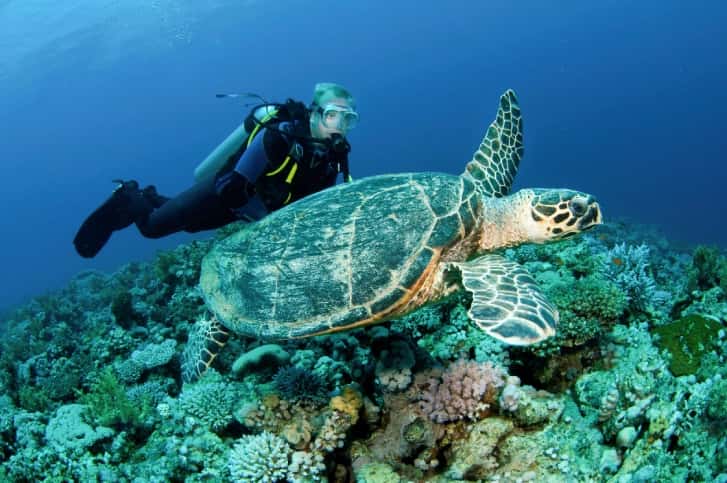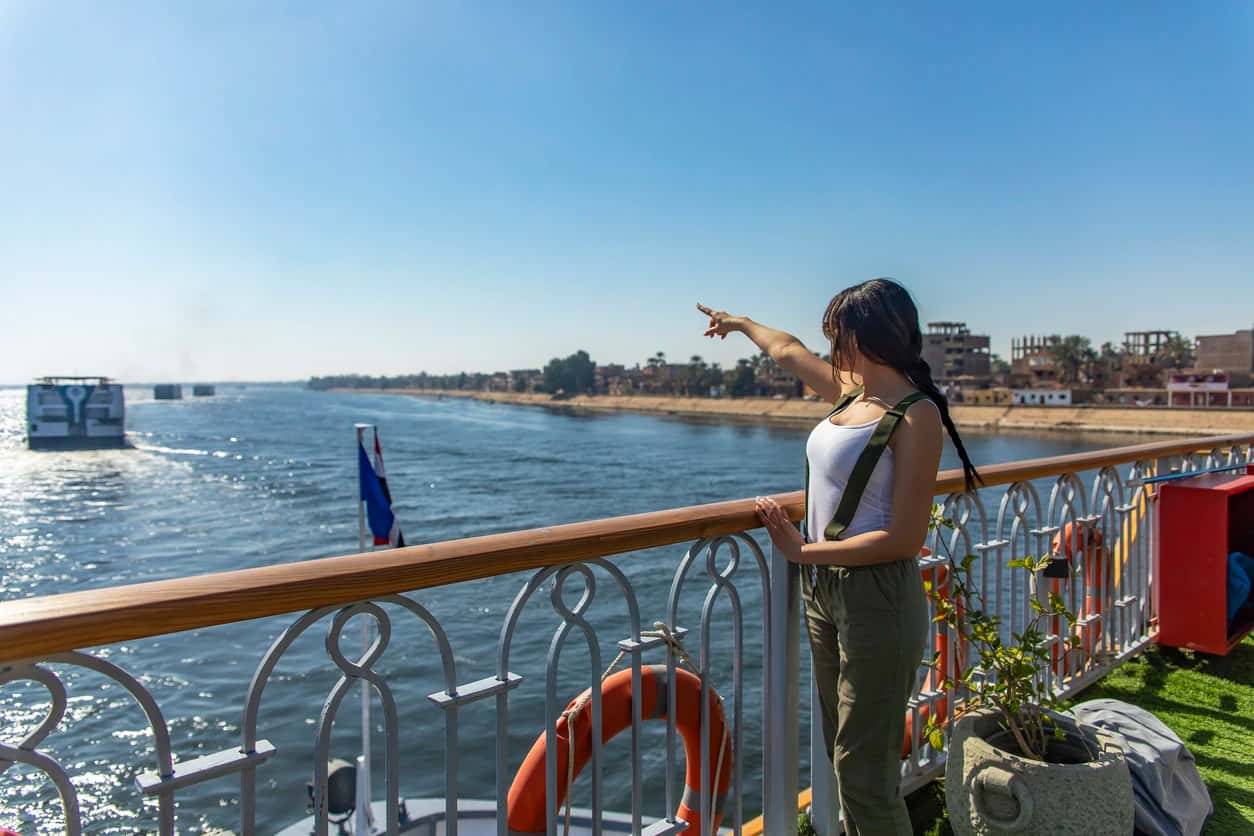
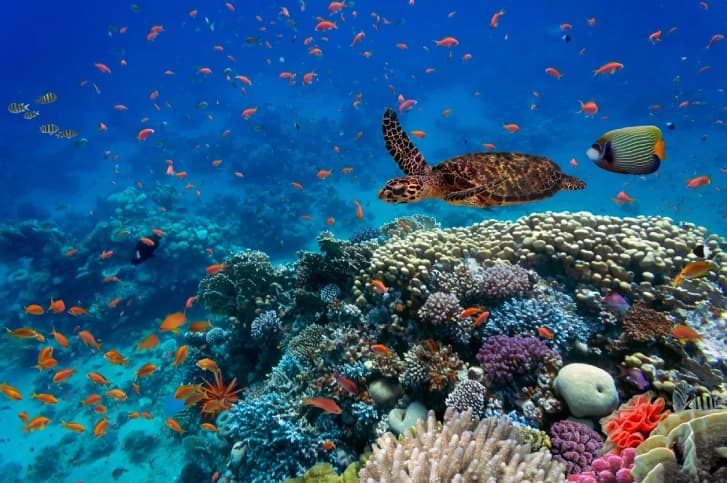
Plan your perfect escape with this guide to Red Sea Egypt’s top dive sites, marine parks, and local culture in this ultimate guide.
1- Historical Significance of Alexandria
2- What Makes Alexandria City Egypt Unique
3- Top Attractions in Alexandria's Old Town
4- Offbeat Experiences and Local Culture
5- Tips for Visiting Alexandria, Egypt
6-Conclusion Discovering Alexandria: A Blend of Ancient and Modern
7- FAQs
Egypt’s Red Sea coast is a vibrant blend of natural beauty, rich marine life, and historical significance. Spanning 900 miles, it offers something for every traveler—from bustling resort towns like Hurghada to the untouched serenity of Marsa Alam. Known for warm, salty waters and thriving coral reefs, it’s a prime destination for diving, relaxation, and cultural exploration, especially in spring and autumn.
The Red Sea’s coral reef system spans over 1,200 miles and ranks among the most biodiverse in the world, with over 1,200 fish species—10% of which are unique to the region. Its warm, clear waters and vibrant coral make it ideal for diving and photography. To preserve this fragile ecosystem, sustainable tourism and conservation practices are essential.
Egypt’s Red Sea coast combines natural beauty with cultural richness. From lively Hurghada to peaceful Dahab, the area offers ancient ruins, local markets, and Bedouin traditions shaped by centuries of trade. Visitors can enjoy desert safaris, marine parks, and warm hospitality, making it a destination of both adventure and cultural depth.
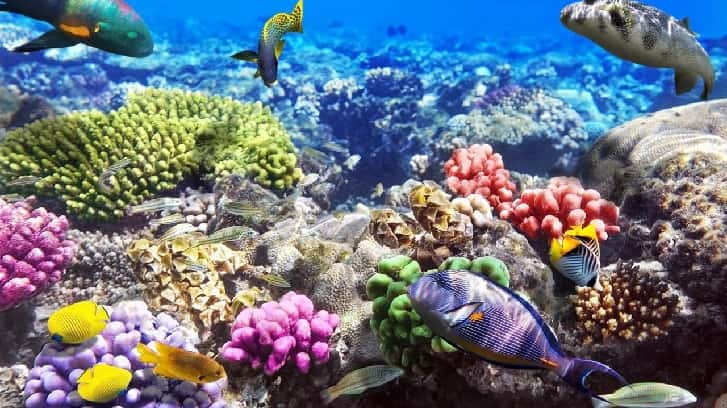
The Egyptian Red Sea coast offers a range of destinations—from luxury resorts to serene hideaways—each with its own unique appeal.
Once a fishing village, Hurghada now welcomes nearly 5 million visitors a year. With 350 days of sunshine, it’s ideal for beachgoers and a gateway to Luxor and Cairo. It features a wide range of all-inclusive resorts for every budget.
Located on the Sinai Peninsula, Sharm attracts over 3 million visitors annually, 80% of whom come to dive or snorkel. It boasts 76 dive sites, including the famous SS Thistlegorm, along with luxurious seaside resorts.
Remote and less developed, Marsa Alam saw 1.3 million visitors in 2023. Its pristine waters and reefs—like Elphinstone—make it a haven for divers seeking encounters with sharks and unspoiled coral.
These quiet Sinai towns offer a relaxed atmosphere and are popular with windsurfers and divers. Dahab’s Blue Hole is a global diving attraction, while both towns provide affordable stays and dramatic natural beauty.
Just north of Hurghada, El Gouna features 18 stylish hotels, lagoons, golf courses, and over 100 restaurants. Known for its design and sustainability, it offers a refined, resort-style experience.
The Egyptian Red Sea offers a unique mix of adventure, nature, and culture that goes far beyond a typical beach getaway.
With over 1,200 marine species, the Red Sea is a top destination for underwater exploration. Iconic sites like the SS Thistlegorm wreck, Elphinstone Reef’s deep drop-offs, and Dahab’s Blue Hole provide unforgettable diving and snorkeling experiences.
Beyond the coast, desert adventures await. From quad biking and jeep safaris to camel rides and Bedouin dinners under the stars, these cultural experiences offer a deeper connection to Egypt’s desert heritage.
Consistent winds make Safaga and Soma Bay premier spots for kitesurfing and windsurfing, especially from May to September. Ideal conditions support both beginners and experienced riders.
Ras Mohammed National Park, Egypt’s first marine reserve, features thriving coral reefs and diverse marine life. Its success has led to the creation of other protected areas to preserve the region’s underwater ecosystems.
For quieter moments, the region offers peaceful beaches with clear, shallow waters. Sharm el Naga is ideal for easy snorkeling, while Abu Dabbab Beach in Marsa Alam offers rare encounters with green sea turtles.
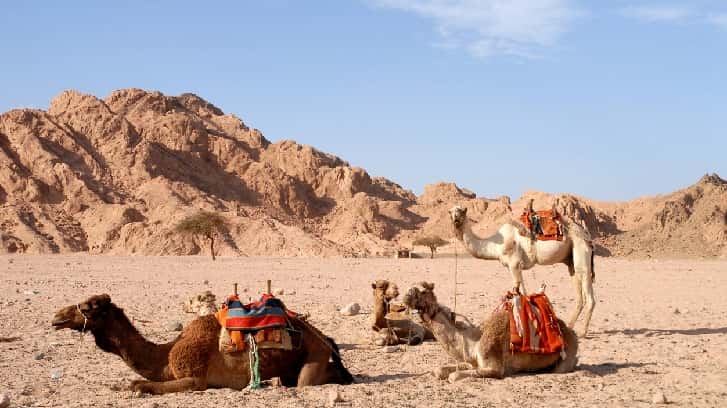
Scuba diving in the Red Sea offers one of the most captivating underwater experiences on Earth. With its clear waters, vibrant coral reefs, and diverse marine life, it’s a dream destination for divers of all skill levels. The region’s warm temperatures and excellent visibility create ideal conditions year-round, whether you’re exploring shallow coral gardens or descending to historic wrecks. Beyond the thrill of discovery, diving here fosters a deep connection to nature and a sense of peace that lingers long after you surface.
The Red Sea is home to some of the world's most iconic dive sites:
1- The Blue Hole, Dahab – A dramatic vertical drop and rich marine life make this site a must for advanced divers.
2- SS Thistlegorm, Sharm El Sheikh – This WWII-era shipwreck offers a haunting look at history beneath the waves.
3- Ras Mohammed National Park – A protected marine reserve with thriving reefs and exceptional biodiversity.
4- St. John’s Reef – Located in the southern Red Sea, this remote site features pristine coral and abundant marine life.
Each site showcases a unique facet of the Red Sea’s underwater wonders, from historical artifacts to untouched ecosystems.
The Red Sea’s rich biodiversity makes it a haven for marine enthusiasts. With over 1,200 species of fish—many found nowhere else—divers can encounter everything from tiny, colorful nudibranchs to majestic whale sharks. Coral reefs teem with life, offering glimpses of turtles, dolphins, and schools of vibrant fish. The Red Sea’s unique environmental conditions, including high salinity and warm waters, support an extraordinary variety of marine organisms, making each dive an educational and awe-inspiring experience.
To enjoy the Red Sea’s underwater treasures safely and responsibly:
1- Choose a reputable dive operator with certified guides and reliable equipment.
2-Know your limits and dive within your certification level; take a refresher course if needed.
3- Respect marine life by avoiding contact and following sustainable diving practices.
4- Stay hydrated and protect yourself from the sun with water, sunscreen, and shade.
5- Plan your dive carefully, reviewing the site and discussing details with your guide.
With thoughtful preparation, divers can experience the full magic of the Red Sea while helping preserve its delicate marine ecosystems for future generations.
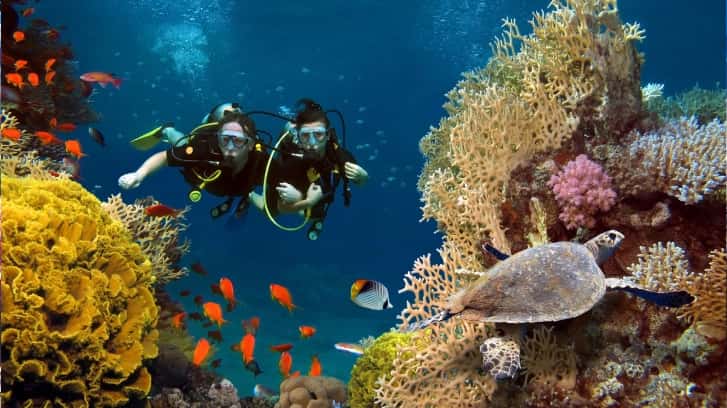
The Red Sea region offers rich cultural encounters, from traditional dishes to historical landmarks, revealing Egypt’s deep heritage.
Local seafood reflects the region's maritime traditions, with dishes like Sayadiya and Feseekh offering authentic flavors. Fresh fish is often grilled or steamed, and the coastal communities balance ancient fishing techniques with growing conservation efforts.
Festivals bring vibrant energy, especially during Ramadan, Sham El-Nessim, and the Sphinx Festival, which combines ancient Egyptian themes with contemporary art. The Red Sea Water Sports Festival celebrates various water activities, attracting enthusiasts from around the world.
Saint Catherine’s Monastery, a 1,500-year-old site at Mount Sinai, holds religious relics and offers a peaceful place for reflection. Nighttime pilgrimages to the summit provide unforgettable sunrises over the desert.
These cultural experiences highlight the region’s layered identities—Pharaonic, Christian, Islamic, and Bedouin—offering a deeper connection to the land where ancient and modern traditions blend seamlessly.
Choosing the right place to stay is crucial for a memorable Red Sea trip. The region caters to every traveler, from luxury resorts to budget-friendly guesthouses, ensuring a perfect fit for various tastes and budgets. Whether you’re after a lavish beachfront villa or a cozy, affordable stay, there’s something for everyone along the coast.
While the Red Sea is a year-round destination, the ideal time is between October and April, when the weather is cooler and perfect for diving and snorkeling.
Major hubs like Hurghada and Sharm El Sheikh have international airports with direct flights from various countries. From there, domestic flights and buses make it easy to reach other Red Sea hotspots.
Taxis and ride-sharing apps are readily available in most tourist areas. Alternatively, renting a car offers the freedom to explore at your own pace.
The local currency is the Egyptian Pound (EGP). While credit cards are accepted in many places, it's a good idea to carry cash for small purchases and tips.
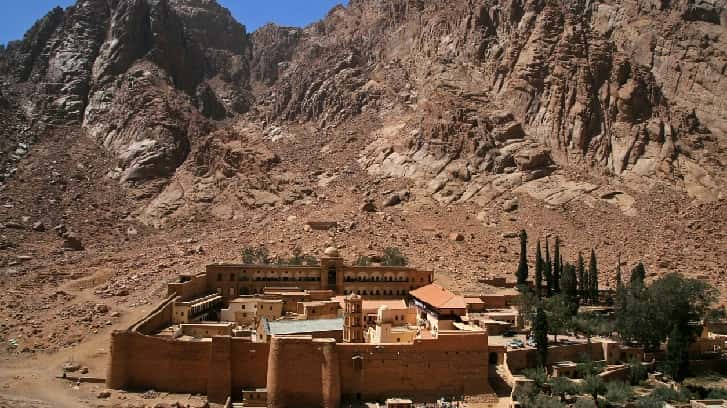
The Red Sea combines stunning landscapes, rich culture, and vibrant marine life, offering something for everyone—from thrilling dives to relaxing beach escapes. It’s a destination that promises unforgettable experiences.
Start planning your adventure today! Whether diving or exploring its history, the Red Sea has something for everyone. Book your trip and discover the magic of this unique destination.
The ideal time is during spring (March to May) and autumn (September to November), with mild temperatures and sea temperatures perfect for swimming and diving.
Swimming and diving are generally safe, but it's important to follow safety guidelines, stay clear of marine life, and heed diving guides' instructions, especially at challenging sites like Elphinstone Reef.
Top destinations include Hurghada, Sharm El Sheik, Marsa Alam, Dahab, Nuweiba, and El Gouna, each offering unique attractions for different types of travelers.
Explore Saint Catherine's Monastery, climb Mount Sinai, experience local festivals, sample traditional seafood dishes like Sayadiya, and engage with Bedouin culture through safaris and desert dinners.
Most visitors require a tourist visa, but some tourists to Sharm El Sheik, Dahab, and Taba can enter without a visa for up to 14 days.
The Red Sea is considered a very safe destination.
The Red Sea facilitated cultural and knowledge exchange, connecting ancient Egypt with other civilizations and countries.
